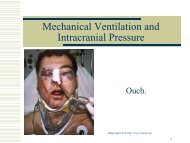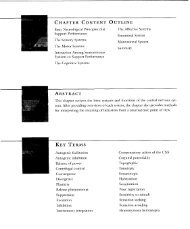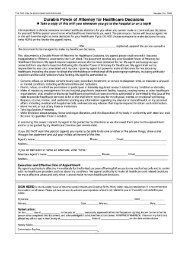Guidelines for the Diagnosis and Management of Asthma
Guidelines for the Diagnosis and Management of Asthma
Guidelines for the Diagnosis and Management of Asthma
Create successful ePaper yourself
Turn your PDF publications into a flip-book with our unique Google optimized e-Paper software.
Develop an active partnership with <strong>the</strong> patient <strong>and</strong><br />
family by:<br />
■ Establishing open communications that consider<br />
cultural <strong>and</strong> ethnic factors, as well as language <strong>and</strong><br />
health care literacy needs, <strong>of</strong> each patient <strong>and</strong> family.<br />
■ Identifying <strong>and</strong> addressing patient <strong>and</strong> family<br />
concerns about asthma <strong>and</strong> asthma treatment.<br />
■ Developing treatment goals <strong>and</strong> selecting<br />
medications toge<strong>the</strong>r with <strong>the</strong> patient <strong>and</strong> family,<br />
allowing full participation in treatment decision<br />
making.<br />
■ Encouraging self-monitoring <strong>and</strong> self-management<br />
by reviewing at each opportunity <strong>the</strong> patient’s<br />
reports <strong>of</strong> asthma symptoms <strong>and</strong> response to<br />
treatment.<br />
Provide to all patients a written asthma action<br />
plan that includes instructions <strong>for</strong> both daily<br />
management (long-term control medication, if<br />
appropriate, <strong>and</strong> environmental control measures)<br />
<strong>and</strong> actions to manage worsening asthma (what signs,<br />
symptoms, <strong>and</strong> PEF measurements (if used) indicate<br />
worsening asthma; what medications to take in<br />
response; what signs <strong>and</strong> symptoms indicate <strong>the</strong> need<br />
<strong>for</strong> immediate medical care). Written asthma action<br />
plans are particularly recommended <strong>for</strong> patients who<br />
have moderate or severe persistent asthma (i.e.,<br />
requiring treatment at step 4, 5, or 6), a history <strong>of</strong><br />
severe exacerbations, or poorly controlled asthma.<br />
See figures 5 <strong>and</strong> 6 <strong>for</strong> samples <strong>of</strong> written asthma<br />
action plans.<br />
Integrate asthma self-management education into<br />
all aspects <strong>of</strong> asthma care. <strong>Asthma</strong> self management<br />
requires repetition <strong>and</strong> rein<strong>for</strong>cement. It should:<br />
■ Begin at <strong>the</strong> time <strong>of</strong> diagnosis <strong>and</strong> continue through<br />
followup care. See figure 7, “Delivery <strong>of</strong> <strong>Asthma</strong><br />
Education by Clinicians During Patient Care Visits,”<br />
<strong>for</strong> a sample <strong>of</strong> how to incorporate teaching into<br />
routine clinic visits.<br />
■ Involve all members <strong>of</strong> <strong>the</strong> health care team, including<br />
physicians, nurses, pharmacists, respiratory<br />
<strong>the</strong>rapists, <strong>and</strong> asthma educators, as well as o<strong>the</strong>r<br />
health pr<strong>of</strong>essionals who come in contact with<br />
asthma patients <strong>and</strong> <strong>the</strong>ir families.<br />
■ Occur at all points <strong>of</strong> care where health care pr<strong>of</strong>essionals<br />
interact with patients who have asthma.<br />
The strongest evidence supports self-management<br />
education in <strong>the</strong> clinic setting. Evidence also<br />
supports education provided in patients' homes,<br />
pharmacies, targeted education in EDs <strong>and</strong> hospitals,<br />
<strong>and</strong> selected programs in schools <strong>and</strong> o<strong>the</strong>r<br />
community sites. Proven community programs<br />
should be considered because <strong>of</strong> <strong>the</strong>ir potential to<br />
reach large numbers <strong>of</strong> people who have asthma<br />
<strong>and</strong> encourage “asthma-friendly” support from<br />
<strong>the</strong>ir families <strong>and</strong> community environments.<br />
■ Use a variety <strong>of</strong> educational strategies to reach<br />
people who have varying levels <strong>of</strong> health literacy<br />
or learning styles. Individual instruction, group<br />
programs, written materials (at a 5th grade reading<br />
level or below), video- or audiotapes, <strong>and</strong> computer<br />
<strong>and</strong> Internet programs all provide effective<br />
educational opportunities. See figure 8, “<strong>Asthma</strong><br />
Education Resources,” <strong>for</strong> a sample <strong>of</strong> available<br />
resources.<br />
■ Incorporate individualized case/care management<br />
by trained health care pr<strong>of</strong>essionals <strong>for</strong> patients<br />
who have poorly controlled asthma <strong>and</strong> have<br />
recurrent visits to <strong>the</strong> emergency department<br />
or hospital. This will provide tailored<br />
self-management education <strong>and</strong> skills training.<br />
Encourage patients' adherence to <strong>the</strong> written<br />
asthma action plan by:<br />
■ Choosing treatment that achieves outcomes <strong>and</strong><br />
addresses preferences that are important to <strong>the</strong><br />
patient, <strong>and</strong> reminding patients that adherence<br />
will help <strong>the</strong>m achieve <strong>the</strong> outcomes <strong>the</strong>y want.<br />
■ Reviewing with <strong>the</strong> patient at each visit <strong>the</strong> success<br />
<strong>of</strong> <strong>the</strong> treatment plan to achieve asthma control<br />
<strong>and</strong> make adjustments as needed.<br />
■ Reviewing patients' concerns about <strong>the</strong>ir asthma<br />
or treatment at every visit. Inquire about any<br />
difficulties encountered in adhering to <strong>the</strong> written<br />
asthma action plan.<br />
■ Assessing <strong>the</strong> patient's <strong>and</strong> family's level <strong>of</strong> social<br />
support, <strong>and</strong> encouraging family involvement.<br />
■ Tailoring <strong>the</strong> self-management approach to <strong>the</strong><br />
needs <strong>and</strong> literacy levels <strong>of</strong> <strong>the</strong> patient, <strong>and</strong><br />
maintaining sensitivity to cultural beliefs <strong>and</strong><br />
ethnocultural practices.<br />
Encourage health care provider <strong>and</strong> health care<br />
system support <strong>of</strong> <strong>the</strong> <strong>the</strong>rapeutic partnership by:<br />
■ Incorporating effective clinician education strategies,<br />
Managing <strong>Asthma</strong> Long Term<br />
19





